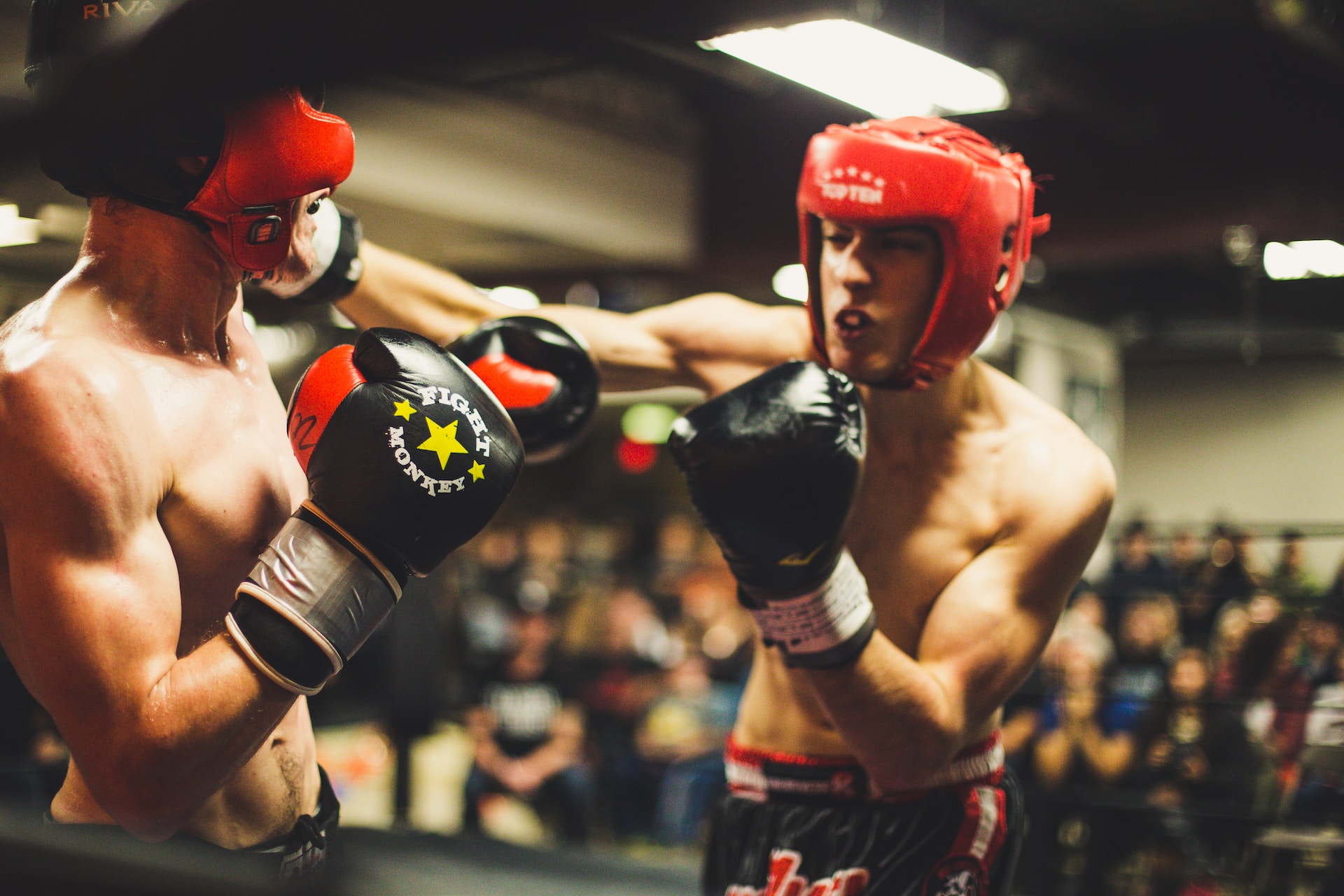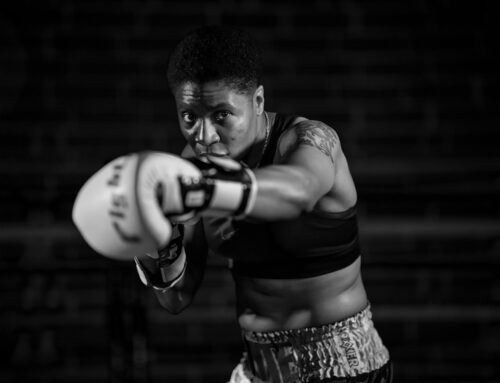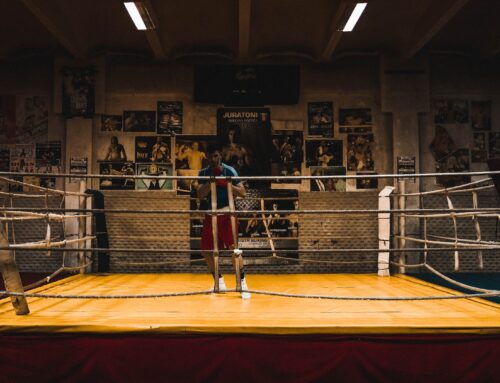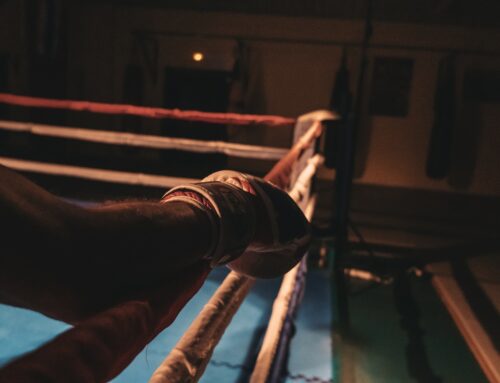Hey there, wannabe pugilists! If you’ve just begun your boxing journey or have want to get to starting boxing, you’re probably feeling both excited and a little overwhelmed. After all, there’s a lot to learn: how to throw combinations and work on footwork drills; what gloves and wraps are best for your size; and whether or not to buy a punching bag.
To make your path even smoother, here’s a rundown of the 10 most common mistakes budding boxers make in the beginning. Avoiding these rookie blunders will help you master the basics with more ease and get you closer to becoming an expert boxer faster. So don your gloves, let’s dip our feet in the sweet science together, and learn from mistakes that others have made so you don’t have to!
Lack of Warm Up When Starting Boxing
Before you start throwing punches, there’s one critical boxing step you can’t skip: warming up. Not stretching beforehand may seem like a minor mistake, but it can lead to serious injuries. Warming up is essential for any sport and boxing is no different. It’s important to loosen your joints and muscles before jumping into a training session. A proper warm-up will raise your heart rate, loosen your muscles, and prevent any pulls or tears that could impede your progress.
Start with dynamic stretches like leg swings and arm circles—these will help increase range of motion and help you avoid injury. Take the time to do some light jogs or jumping jacks to get your blood flowing, then move into some more specific drills related to the skill set you’re working on that day. Afterward, cool down with static stretching to lengthen the muscles and ensure a full recovery. Don’t take shortcuts when it comes to warm-ups—it could be the difference between a successful training session and an injury-filled one!
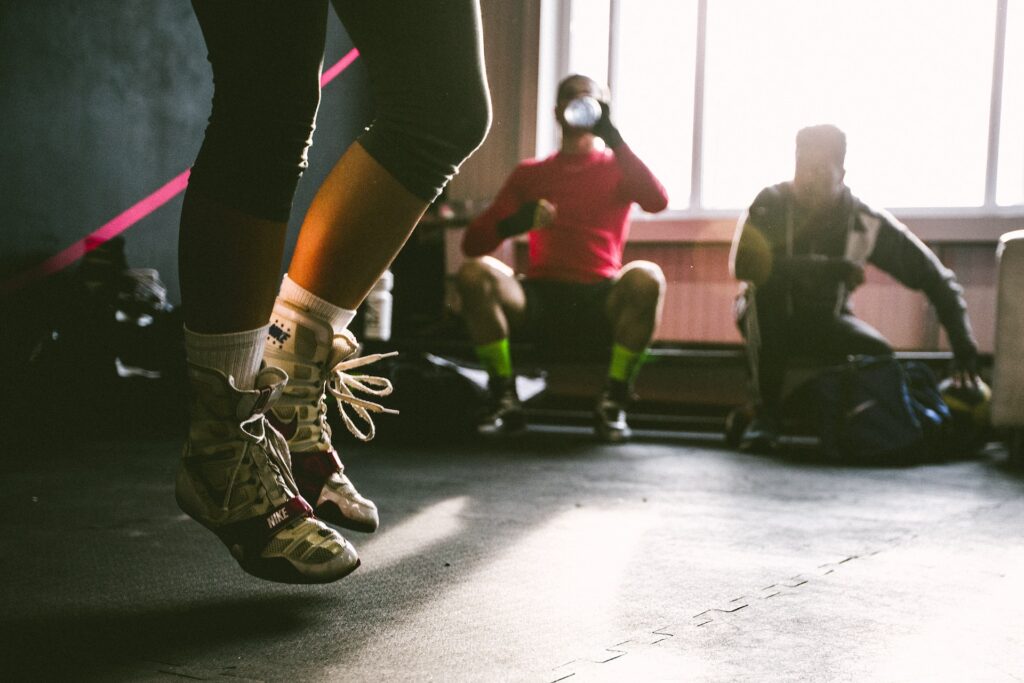
Not Understanding Punch Mechanics
Ah, punch mechanics. This one is tricky because if done wrong, it can cause injury. As you start boxing, try to be aware of how effective your punches are and how you are delivering them.
When a punch is thrown it should come from the ground up, not just with the arm extended. The best punches come from the ground up, generating power and explosiveness with your legs and hips for power before firing off that punch. Also, make sure you are controlling the weight in each punch—it can be tempting to throw those punches wildly but this won’t do you any favors and can even lead to fatigue in the ring or injury; proper boxing stance relies on staying balanced while throwing a punch.
Finally, remember: trust but check! Always trust your intuition when starting boxing but double check your form in front of a mirror or with a coach if possible—you’ll be glad you did!
Improper Stance
One of the most common mistakes boxers make when they get started is getting a poor stance. This can be a big problem, since your stance is the foundation of your boxing training.
A proper stance allows you to keep your balance throughout an entire bout and helps you generate power in your punches. It’s essential to find an effective stance before engaging in any type of sparring or competition.
So what’s a good boxing stance look like? It should include:
- Weight evenly distributed between both feet
- Your back foot at a 45-degree angle
- Hands up close to the chin, with elbows in tight
- Hips slightly forward, with head held up high for visibility
- Knees bent, allowing for quick movement in any direction
If you take the time to get your stance down but still don’t seem to be able to stay balanced during a bout, it might be time to work on strengthening your core muscles – which will give you greater control and power during fights!
Not Focusing on Feet Movement
Another common mistake when starting boxing is not spending enough time focusing on feet movement. Footwork is one of the most important aspects of any boxing match – after all, a boxer’s ability to move quickly and effectively will determine their success in the ring.
It’s important to work on your footwork regularly, as it can help you avoid getting hit and allow you to set up some good punches. Some effective footwork drills include:
- Running laps while hopping on one leg
- Side stepping from one end of the ring to the other
- Shadowboxing while moving back and forth between imaginary opponents
- Jumping rope for agility and quickness
Having good footwork will also increase your overall stamina, as you will be able to move around the ring more efficiently. As your feet are constantly in motion, you won’t be wasting energy by standing still for long periods of time. So make sure you spend plenty of time focusing on feet movement if you want to take your boxing game up a notch!
Forgetting to Block and Counterstrike
One of the mistakes you don’t want to make when starting boxing is forgetting to block. Blocking is one of the most basic defense techniques you can use, and it’s also an important part of counterpunching.
Blocking
When blocking, make sure to keep your guard up! Your hands should be near your face and ready to ward off any strikes that may come your way. You can use either a high guard (tuck your fists near your chin) or a low guard (hands held out horizontally in front of you). Both guards are effective and it’s up to you which one you want to use in different situations.
Counterstriking
Counterstriking is an important part of the sport and involves you not only blocking punches but also throwing them back. This will help you gain control of the fight, as well as set up more powerful punches later on. To counterstrike effectively, stay relaxed, practice timing and let your opponent throw the first punch! That way, you’re able to see where their punch is going before striking back. Don’t be afraid to experiment and find what works best for your style.
Neglecting Defense
One of the biggest mistakes you can make when starting boxing is neglecting defense. This is a huge mistake, because the ability to defend yourself and counter your opponent’s punches are essential to success in the ring.
It’s important to remember that good defense should be a reflex. When you’re in the ring, your body and mind should automatically know how to move out of the way, block and counter-punch in an efficient manner.
Here are a few tips to help you stay on top of your defensive game:
- Keep your hands up — this will help to protect your face and body from incoming punches while also allowing you to be prepared for a counter-attack.
- Move constantly – Never stay still when in the ring as it gives your opponent more opportunity to land a punch or kick on you. Keep moving your feet and using small shifts while staying light on them so that you can move around quickly if needed.
- Don’t forget about head movement–Head movement is crucial for defending yourself! It helps with blocking punches as well as avoiding getting hit by surprise during an exchange of blows
These are just three basic tips for avoiding common mistakes when starting boxing—but remember, practice makes perfect! Taking the time to perfect each technique and understanding how each movement affects others will give you an edge in any fight.
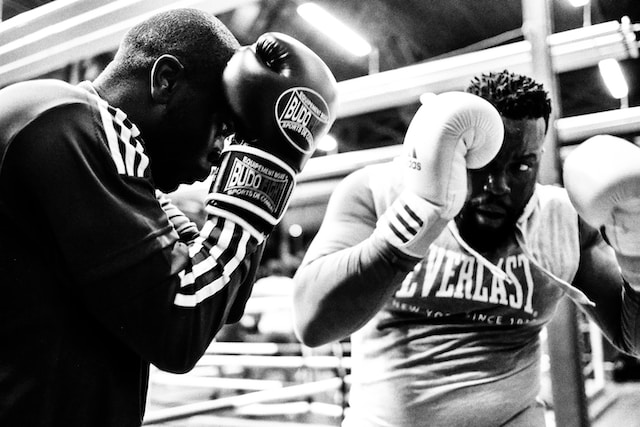
Skipping Footwork Drills
When you’re starting out with boxing, you may be tempted to focus on punching—but don’t forget the importance of footwork drills. Footwork is essential for many reasons. For starters, solid footwork allows you to maintain your balance and keep your center of gravity stable when you throw punches so you can hit with power while remaining fully balanced.
Why are footwork drills important? Here are a few key reasons:
- Footwork gives a boxer agility and speed to evade punches from opponents.
- It also allows a boxer to close the distance between themselves and their opponent quickly.
- Good footwork helps conserve energy which helps fighters last in the ring for longer fights.
- It is essential for controlling range enabling boxers to punch from their preferred distance.
- Finally, strong footwork helps prevent a fighter from ending up in bad positions on the ropes or in a corner where they can be pinned down and open to punishment.
So if you’re just starting out, take some time and practice your basics: shuffle steps, side steps and basic pivots while shadowboxing or hitting a bag. Your boxing game will thank you!
Overlooking Hand-Eye Coordination
When it comes to boxing, your hand-eye coordination is important — and something you should definitely not overlook. That’s because when you punch, it’s your brain that tells your body what to do. Your brain sends out a signal along with a visual cue, and it’s these two things that help you time and coordinate your movements.
So why is hand-eye coordination important?
- Improved accuracy: With improved hand-eye coordination, you’ll be able to increase the accuracy of your punches, which will help you make contact with the target easier.
- Timing: Good timing is essential in boxing – if you don’t correctly time a punch then it won’t have any power behind it and can potentially leave you wide open for a retaliatory punch. Hand-eye coordination will help improve your timing, so that when you throw a punch it lands exactly where intended at the correct speed and power for maximum effect.
- Focus: Training hand-eye coordination also improves focus, as if helps train your brain to better focus on the target, rather than on other distractions around you such as people in the crowd or movements from an opponent.
- Reaction time: Hand-eye coordination increases reaction time – being able to react quickly is essential in boxing and footwork drills can improve this significantly, making blocking punches or avoiding them much easier in a fight situation.
The best way to strengthen hand-eye coordination is doing eye exercises and activities such as badminton or tennis – focus intensely on the ball and use quick reactions as they come flying towards you!
Not Practicing Combinations or Drills
If you don’t practice drills and combinations, then you are basically setting yourself up for a bunch of uncomfortable surprises. Sure, throwing regular jabs and upper cuts at an imaginary opponent is fun – but that’s not enough. Learning combinations and practicing drills can help you stay focused and have better confidence in the ring.
Combinations
Combinations are basically combinations of punches thrown in succession that form a sequence. This hyper-specific technique can be the difference between throwing a random punch or actually doing something with your hands! Learning combinations makes it easier for you to defend yourself and go on offense when needed.
Drills
Drills, on the other hand, involve practicing specific offensive or defensive sequences repeatedly with a partner. This is how you learn proper timing and accuracy in your boxing skills—and it’s really important because it forces you to think about what comes next instead of just going off instinct or just following your natural reflexes. Plus, it’ll make sure you’re always in the best possible position to protect yourself from getting punched!
Skipping Strength & Conditioning Training
The tenth and final mistake to avoid when starting boxing is skipping strength and conditioning training. Sure, you may feel like you can throw a powerful punch or be agile enough to dodge punches, but getting in shape and working on skill-specific exercises is crucial for long-term success in the ring.
Why Strength & Conditioning Training Matters
Strength and conditioning workouts include activities that improve your balance, coordination, speed, as well as muscular strength and endurance. These workouts also help with improving your form and agility to ensure you are executing the perfect punch or bobbing and weaving out of dangerous situations.
What Training Should You Do?
There are several exercises you should be doing such as squats, toe touches, glute bridges, burpees, bodyweight lunges, planks, mountain climbers—and they should all be done properly with correct form that mimics the movements in boxing. In addition to physical training, you should also consider yoga or Pilates for flexibility work and mental focus!
Gaining strength from strength and conditioning workouts isn’t an overnight process; it requires time, effort and consistency—but if done correctly these exercises will give you an edge over your competitors when it comes time to step into the ring for a fight!
Conclusion
Starting boxing can be challenging and sometimes overwhelming, but with the right information and a bit of practice, you can become a successful boxer. Be sure to avoid the common mistakes described in this article to ensure you’re on the right track for the best results.
Above all, remember that you can do this—with some dedication and hard work, you’ll be able to learn the basics of boxing and develop a solid foundation for your future. Once you’re comfortable throwing punches and setting yourself up for success, you’ll be well on your way to becoming a fierce competitor. Good luck!

